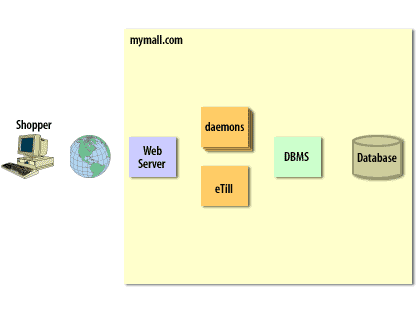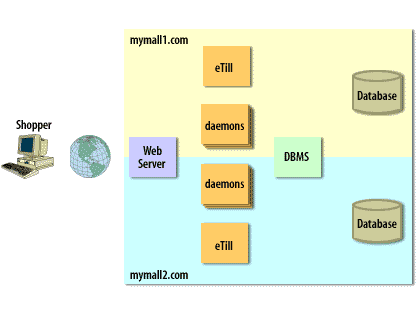| Lesson 10 | Machine configurations |
| Objective | Configure Hardware for increased Performance. |
Configure Hardware for increased Performance
Depending on your needs, several machine and software configurations may be used.
For better performance and load balancing, the various software components can be placed on different computers.
The four basic configurations we will discuss in the next two lessons are:
The four basic configurations we will discuss in the next two lessons are:
- A single instance on a single machine
- A multihomed configuration, with several domain names hosted on the same machine
- A multimachine configuration, with various e-commerce software components installed on different machines to improve performance
- A multimachine configuration with a staging and a production server, so that site upgrades can be tested before they are made publicly available
Single Machine Configuration
The single machine configuration, the default configuration, has all the software components installed on a single machine.

This configuration has:
- A single domain name (for example, mymall.com)
- A single instance of the e-commerce software
- A single pool of e-commerce software daemons to process e-commerce software commands
- A single instance of the payment gateway
- A single database on the same machine
Multihomed, single machine configuration
In this configuration, the Web server hosts multiple domain names (each with a distinct IP address) on the same machine. Each store appears to be a completely independent entity on the Internet.

- Multiple domain names (for example, mall1.com and mall2.com) or multiple stores in a single domain
- An instance of the e-commerce software system for each domain name
- An instance of the payment gateway for each domain name
- A database for each domain name